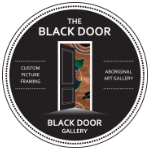Tapestries & Needlework Framing

All Your Framing Needs
There are a number of types of needleworks, finestitch, tapestry and longstitch. Fine stitch is like the samples above and below, these types of needleworks take many hours, days, weeks or months to complete, due to the complexity of the designs, and there is a right way and a wrong way to frame them.
So how do you know if your framer knows how to correctly frame a piece of needlework that you may have spent months to finish?
Always ask the following questions and if the answers do not add up, then find a new framer.
How do you mount the needlework to the backing board?
Wrong Answer : We simply glue it down to a board.
This is not the correct way to mount any needlework, tapestry or longstitch. Your works should NEVER be glue down, and if the framer is doing this, then your work has been ruined forever.
There are three correct ways to mount any needlework, and this will depend on the experience of the framer and also what the item is.
Spot Stitching
Spot stitching is usually done to pieces of embroidery that may have lace edging and is more like a decorative piece or rugs.
When we frame something like this, it would be spot stitched to an acid free coloured matboard, in either a standard coloured board or suede.
This is done with needle and thread, and we only stitch it in some areas to allow it to appear to float on the mat. A secondary mat can be added to create space and ensure the glass does not touch the item.
Small rug that has been spot stitched to a suede mat. Mat has been set back with a frame spacer to make sure the rug does not touch the glass, and glazing is Art Glass, this gives the overall finish a look like there is no glass and provides UV Protection from fade.
Second way to fix these types of works is stretching with staples. When an embroidery piece has a lot of bleed material or blank area, this can be used to stretch with, and can either be stretched around an MDF board that has an acid free board added to it, to protect the embroidery, it would then be framed as the above image with frame spacer and glass.
Alternatively it can be stretched over a large board, and have mats added to it (like the image below). This helps to create space and draw your eye into the artwork. Custom designed mats can also be done to follow the contour of the work, just like in the sample below.


Lacing
The final way to properly stretch your needlework is by lacing the back.
This is done by using cotton thread and wrapping the needlework around an acid free board, usually a foamcore board and going back and forward across the needlework both vertically and horizontally like in the image below.
It is mainly done by hobby framers and not exactly adopted by professional framers, as it will not make the lines prefectly straight on the needlework.
Questions to ask
Is your framer using standard galvanised staples or stainless steel staples to stretch with?
Black Door Gallery only uses Stainless Steel staples to stretch with, this ensures that there will be no issues with rust in the future, and helps to protect the integrity of the needlework.
So what are the best questions to ask your framer ?
The best way to ask and to receive an honest answer is simply ask the following when quoting on framing your needlework :
Hi, I would like to get my needlework framed but just wanted to know what your process is for framing these works.
Do you mount them using staples or glue? Framers will let you know the process right here. Obviously if they glue them down, find another framer.
If the answer is they staple them down, simply ask this.
Can you tell me what type of staples you use?
If the answer is galvanised, then think about using someone else.
At the end of the day, it is your work, that you have spent a lot of time to create, so don’t entrust your item with someone who does not have the experience and expertise to frame it correctly.

Do you need a custom-made frame or more info?
Please call or drop into the gallery and our friendly
team will be happy to help.
